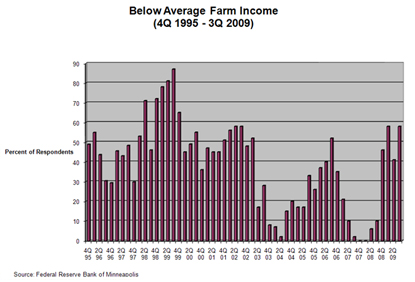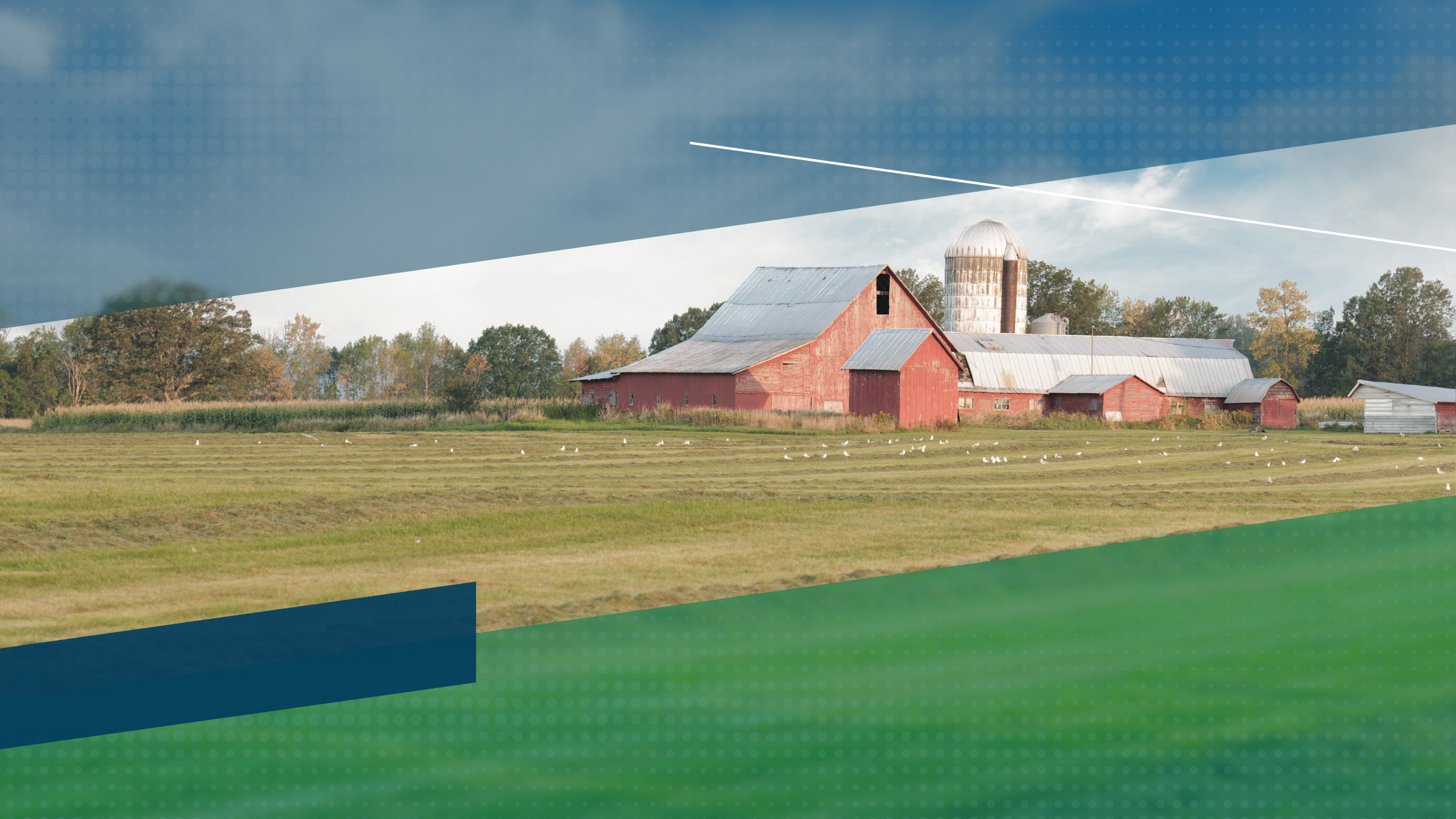Many agricultural producers are having a tough time. The Minneapolis Fed’s third-quarter (October) agricultural credit conditions survey indicates that ranchers and farmers are facing lower income and have cut back on capital expenditures and loan repayments in the third quarter. Loan demand was flat, but collateral requirements increased slightly. Few banks reported fund shortages, and interest rates stayed nearly constant from the second quarter. Farmland values and cash rents decreased slightly. The outlook for the fourth quarter is similar to the results for the third quarter, and lenders expect a decreased rate of loan repayments.
Farm income, household spending and capital investment
Third-quarter agricultural income decreased, as 58 percent of respondents reporting lower levels. “The dairy and hog economy is having a significant negative impact in this area,” commented a Minnesota lender. In dairy-heavy Wisconsin, all respondents reported decreases in income. Other respondents indicated that current prices of inputs like feed as well as selling prices are causing losses for some cattle/dairy producers. Meanwhile, farmers are worried about crop conditions at harvest time.
The squeeze on profits is putting downward pressure on capital investment and household spending. Over half the district respondents and all of the Wisconsin respondents indicated that their customers decreased capital spending. At the same time, 38 percent of the respondents noted decreased household spending, and only 9 percent reported increased household spending.
Loan repayments and renewals
The rate of loan repayments deteriorated during the third quarter. Twenty-six percent reported lower levels of repayments, and only 6 percent saw higher rates. Many producers are renewing or extending their loans. Twenty-four percent of banks reported increases, and 3 percent reported decreases.
Demand for loans, required collateral and interest rates
Loan demand remained relatively constant, with 23 percent of respondents reporting an increase and 26 percent reporting a decrease. More lenders continued to tighten loan conditions, as 24 percent increased the amount of collateral required. Only 1 percent of banks reported refusing a loan because of fund shortages. Interest rates stayed almost uniformly constant; only variable operating loan rates changed, with an increase of 10 basis points.
Cash rents and land values
Cash rents and land values were down slightly in the third quarter. Average cash rents for nonirrigated farmland in the district were down about 3 percent, cash rents for irrigated farmland were down nearly 1 percent and cash rents for ranchland were down 4 percent. Nonirrigated farmland declined 6 percent in value, irrigated farmland prices were up 5 percent and ranchland value dropped by an average of 7 percent. (Prices vary from state to state and from parcel to parcel.) For more detailed information on agricultural prices, see the Minnesota Land Economics Web site.
Outlook
Many lenders are concerned about the fourth quarter, as 58 percent of lenders said that farm income will be down in the fourth quarter. Several commented on the possibility of a large harvest if weather conditions improve. “Increase in yields will not offset the significant decrease in prices that has taken place,” commented a Minnesota lender. “Livestock and dairy farmers are still struggling. 2009-2010 will be a tight year for a number of our farm customers. We do anticipate payback problems, and there will be more extensions,” said a Minnesota lender. Thirty-five percent expect a lower rate of loan repayments, and 13 percent expect a higher rate of loan repayments. Over half expect a decrease in capital spending, and larger collateral requirements are anticipated in the fourth quarter by 21 percent of respondents. The outlook for next yearis not great: “Production, future prices and anticipated 2010 expenses coupled with prevalent land costs—it appears 2010 will be a break-even year at best,” a Minnesota lender said.
Appendices: State Fact Sheet | State Fact Sheet–Outlook
Agricultural Interest Rates






